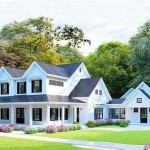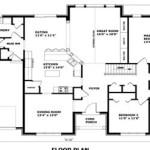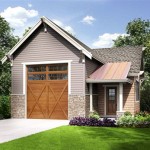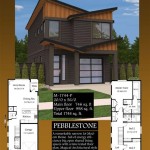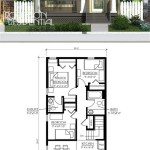Tudor House Floor Plans are blueprints or schematics that provide a detailed representation of the layout and structure of Tudor homes, which were common in England during the Tudor period (1485-1603). These floor plans serve as a blueprint for constructing or renovating Tudor-style houses, ensuring that the spaces are functional, aesthetically pleasing, and reflect the architectural style of the era.
Tudor House Floor Plans typically consist of multiple levels, with the ground floor often housing the main entrance hall, kitchen, and dining room. Upper floors typically accommodate bedrooms, studies, and other private spaces. The plans include details such as the placement of walls, windows, doors, fireplaces, and staircases, allowing builders and architects to visualize the overall design and flow of the house.
In this article, we will explore the key elements and characteristics of Tudor House Floor Plans, examining their architectural significance and providing insights into the construction and renovation of Tudor-style homes.
Tudor House Floor Plans exhibit several distinguishing characteristics that define their architectural style and functionality:
- Multiple levels: Typically two or more stories, with a ground floor and upper floors for private spaces.
- Central hall: A prominent feature on the ground floor, serving as the main entrance and circulation space.
- Great hall: A large, multi-purpose room often used for entertaining and gatherings.
- Chambered plan: Rooms arranged in a series of chambers, connected by doors and passages.
- Ornate fireplaces: Elaborate fireplaces with decorative mantels and chimney stacks.
- Bay windows: Projecting windows that create additional space and natural light.
- Steeply pitched roofs: Roofs with a steep incline, often covered in tiles or thatch.
- Half-timbered exteriors: Exposed wooden beams on the exterior walls, creating a distinctive visual pattern.
- Asymmetrical facades: Irregular and varied facades, reflecting the organic growth and evolution of the house over time.
These elements combine to create the unique and recognizable character of Tudor House Floor Plans, which have influenced residential architecture and design for centuries.
Multiple levels: Typically two or more stories, with a ground floor and upper floors for private spaces.
Tudor houses were typically constructed with multiple levels, creating a vertical division of space that accommodated different functions and provided privacy. The ground floor, also known as the first floor, was often dedicated to communal activities and public spaces.
- Central hall: The ground floor typically featured a central hall, which served as the main entrance and circulation space. This hall often led to other rooms on the ground floor, such as the great hall, kitchen, and dining room.
- Great hall: The great hall was a large, multi-purpose room that was often the heart of the Tudor home. It was used for entertaining guests, dining, and holding gatherings. The great hall was often located on the ground floor and featured an impressive fireplace and high ceilings.
- Kitchen: The kitchen was typically located on the ground floor and was responsible for preparing meals for the household. Tudor kitchens were often equipped with large fireplaces for cooking and heating the space.
- Dining room: The dining room was another common room on the ground floor and was used for formal dining. Tudor dining rooms were often furnished with long tables and chairs, and featured decorative elements such as tapestries and paintings.
The upper floors of Tudor houses were typically reserved for private spaces, such as bedrooms and studies. These floors were often accessed by staircases located in the central hall or other parts of the house.
Central hall: A prominent feature on the ground floor, serving as the main entrance and circulation space.
The central hall was a prominent feature of Tudor House Floor Plans, serving as the main entrance and circulation space for the house. It was typically located in the center of the ground floor and provided access to other rooms on that level, as well as to the upper floors via staircases.
The size and grandeur of the central hall varied depending on the size and status of the house. In larger houses, the central hall was often a grand and impressive space, with high ceilings, elaborate moldings, and decorative features such as tapestries and paintings. In smaller houses, the central hall was more modest in size and decoration, but it still served as the main entrance and circulation space.
The central hall was often used for a variety of purposes, including:
- Welcoming guests: The central hall was the first space that visitors would enter when they arrived at a Tudor house. It was a place to greet guests and offer them refreshments.
- Circulation: The central hall provided access to other rooms on the ground floor, such as the great hall, kitchen, and dining room. It also provided access to the upper floors via staircases.
- Socializing: The central hall was often used as a place for socializing and gathering, especially in larger houses. It was a place where family members and guests could meet and converse.
The central hall was an important part of Tudor House Floor Plans, serving a variety of functions and contributing to the overall character and atmosphere of the house.
Great hall: A large, multi-purpose room often used for entertaining and gatherings.
The great hall was a large, multi-purpose room that was often the heart of the Tudor home. It was used for a variety of purposes, including entertaining guests, dining, and holding gatherings. The great hall was typically located on the ground floor and featured an impressive fireplace and high ceilings.
The great hall was often the largest room in the house and was used for a variety of social and ceremonial purposes. It was a place where the lord of the manor would receive guests, hold feasts, and conduct business. The great hall was also used for more informal gatherings, such as dancing, music, and games.
The great hall was often decorated with tapestries, paintings, and other artwork. The fireplace was often the focal point of the room and was often elaborately decorated. The great hall was a symbol of the wealth and status of the lord of the manor and was a place where he could display his power and authority.
The great hall was an important part of Tudor House Floor Plans and played a significant role in the social and ceremonial life of the household.
Chambered plan: Rooms arranged in a series of chambers, connected by doors and passages.
The chambered plan is a distinctive feature of Tudor House Floor Plans. It refers to the arrangement of rooms in a series of chambers, which are connected by doors and passages. This layout allowed for greater privacy and flexibility in the use of space, and it also reflected the hierarchical nature of Tudor society.
The main chambers in a Tudor house were typically arranged around a central hall. The great hall was the largest and most important chamber, and it was used for entertaining guests, dining, and holding gatherings. Other chambers on the ground floor included the kitchen, dining room, and withdrawing chamber, which was a private room used by the lord and lady of the manor for relaxation and entertaining close friends and family.
The upper floors of a Tudor house typically contained a series of smaller chambers, which were used as bedrooms, studies, and guest rooms. These chambers were often connected by narrow passages and staircases, creating a labyrinthine layout that could be difficult to navigate. The placement of the chambers also reflected the social hierarchy of the household, with the most important chambers located on the lower floors and the less important chambers located on the upper floors.
The chambered plan was an important part of Tudor House Floor Plans, and it played a significant role in the social and domestic life of the household.
Ornate fireplaces: Elaborate fireplaces with decorative mantels and chimney stacks.
Ornate fireplaces were a prominent feature of Tudor House Floor Plans, serving both practical and aesthetic purposes. They were typically constructed of stone or brick and featured elaborate carvings, moldings, and other decorative elements.
- Focal point of the room: Fireplaces were often the focal point of a Tudor room, providing a source of heat and light. They were often placed in the center of a wall and surrounded by a decorative mantelpiece.
- Symbol of wealth and status: The size and elaborateness of a fireplace was often a symbol of the wealth and status of the household. Larger fireplaces with more ornate decorations were found in the homes of the wealthy and powerful.
- Practical function: In addition to their aesthetic appeal, fireplaces also served a practical function. They were used for cooking, heating the home, and providing light. Tudor fireplaces were often equipped with large grates and andirons, which allowed for efficient burning of wood.
- Architectural feature: Fireplaces were also an important architectural feature of Tudor houses. They were often incorporated into the design of the house and used to create a sense of symmetry and balance. The chimneys stacks were also often decorative features, with elaborate moldings and carvings.
Ornate fireplaces were an important part of Tudor House Floor Plans, contributing to the overall character and atmosphere of the home. They were a symbol of wealth and status, a practical source of heat and light, and an important architectural feature.
Bay windows: Projecting windows that create additional space and natural light.
Bay windows are a distinctive feature of Tudor House Floor Plans. They are projecting windows that extend outwards from the wall of the house, creating additional space and allowing for more natural light to enter the room.
Bay windows were typically constructed of wood and featured multiple panes of glass, which were often arranged in a geometric pattern. They were often supported by decorative corbels or brackets, and were topped with a decorative cornice or frieze.
Bay windows were used in a variety of rooms in Tudor houses, including the great hall, dining room, and bedrooms. They were particularly popular in the great hall, where they provided a panoramic view of the surrounding landscape. Bay windows also allowed for more natural light to enter the room, which was important in an era before artificial lighting.
In addition to their practical benefits, bay windows also added a touch of elegance and style to Tudor houses. They were often decorated with stained glass or other decorative elements, and they could be used to create a variety of architectural effects. For example, bay windows could be used to create a sense of symmetry or to highlight a particular feature of the house.
Bay windows were an important part of Tudor House Floor Plans, and they played a significant role in the overall character and appearance of the house.
Steeply pitched roofs: Roofs with a steep incline, often covered in tiles or thatch.
Structural advantages
Steeply pitched roofs were a common feature of Tudor House Floor Plans due to their structural advantages. The steep incline of the roof allowed for better drainage of rainwater and snow, which helped to protect the roof from damage and leaks. The steep pitch also helped to reduce the amount of wind resistance acting on the roof, making it more stable in high winds.
Materials
Tudor roofs were typically covered in either tiles or thatch. Tiles were a popular choice because they were durable and fire-resistant. Thatch was also a common roofing material, especially in rural areas. Thatch was made from straw or reeds and was less expensive than tiles, but it was also less durable and more flammable.
Architectural style
Steeply pitched roofs also played an important role in the overall architectural style of Tudor houses. The steep incline of the roof created a distinctive silhouette that is easily recognizable. The roofs were often decorated with decorative chimneys and gables, which added to the overall visual appeal of the house.
Clerestory windows
Clerestory windows were often incorporated into the design of steeply pitched roofs. Clerestory windows are windows that are located in the upper part of a wall, above the main roofline. These windows allowed for more natural light to enter the upper floors of the house, which was important in an era before artificial lighting.
Half-timbered exteriors: Exposed wooden beams on the exterior walls, creating a distinctive visual pattern.
Half-timbered exteriors are a distinctive feature of Tudor House Floor Plans. They are characterized by exposed wooden beams on the exterior walls, which create a unique and visually appealing pattern. Half-timbered construction was a common building technique in Tudor England, and it was used in both large and small houses.
- Structural support: The exposed wooden beams in half-timbered exteriors serve a structural purpose. They help to support the weight of the roof and walls, and they provide additional strength and stability to the house. Half-timbered construction was particularly well-suited for building houses in areas with high winds, such as coastal regions.
- Decorative element: In addition to their structural function, half-timbered exteriors also serve as a decorative element. The exposed wooden beams create a distinctive visual pattern that adds character and charm to the house. Half-timbered exteriors were often painted in contrasting colors, which further enhanced their visual appeal.
- Regional variations: Half-timbered construction was used throughout England during the Tudor period, but there were some regional variations in the style. In some regions, the wooden beams were arranged in a regular, geometric pattern. In other regions, the beams were arranged in a more irregular and organic pattern. The type of wood used for the beams also varied from region to region.
- Modern revival: Half-timbered exteriors remain popular today, and they are often used in modern houses that are designed to evoke the Tudor style. Modern half-timbered exteriors are typically constructed using traditional materials and techniques, but they may also incorporate some modern materials and methods.
Half-timbered exteriors are an important part of Tudor House Floor Plans, and they contribute to the overall character and appearance of the house. They are a distinctive and visually appealing feature that adds charm and character to any home.
Asymmetrical facades: Irregular and varied facades, reflecting the organic growth and evolution of the house over time.
Asymmetrical facades are a distinctive feature of Tudor House Floor Plans. They are characterized by irregular and varied facades, which reflect the organic growth and evolution of the house over time.
Tudor houses were often built in stages, as the need for additional space arose. This resulted in a haphazard and asymmetrical appearance, with different parts of the house being built at different times and in different styles. The facades of Tudor houses often reflect this organic growth, with additions and alterations made over time.
The asymmetrical facades of Tudor houses also reflect the changing tastes and fashions of the Tudor period. As new architectural styles emerged, Tudor houses were often updated and remodeled to reflect the latest trends. This resulted in a mix of different architectural styles on a single facade, adding to the overall eclecticism of Tudor architecture.
The asymmetrical facades of Tudor houses are a unique and charming feature that adds character and individuality to each house. They are a reminder of the organic growth and evolution of these houses over time, and they reflect the changing tastes and fashions of the Tudor period.










Related Posts

